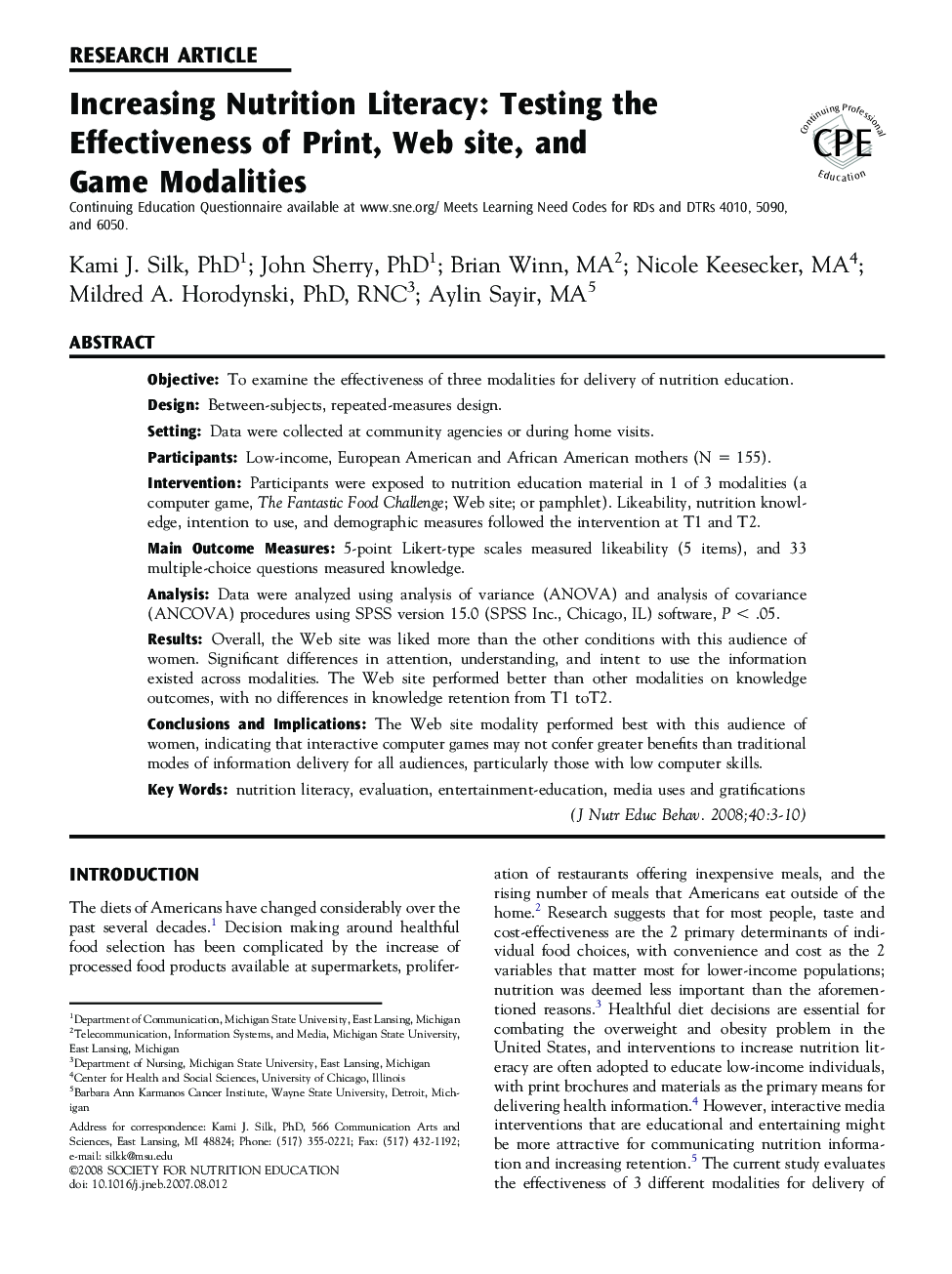| Article ID | Journal | Published Year | Pages | File Type |
|---|---|---|---|---|
| 362445 | Journal of Nutrition Education and Behavior | 2008 | 8 Pages |
ObjectiveTo examine the effectiveness of three modalities for delivery of nutrition education.DesignBetween-subjects, repeated-measures design.SettingData were collected at community agencies or during home visits.ParticipantsLow-income, European American and African American mothers (N = 155).InterventionParticipants were exposed to nutrition education material in 1 of 3 modalities (a computer game, The Fantastic Food Challenge; Web site; or pamphlet). Likeability, nutrition knowledge, intention to use, and demographic measures followed the intervention at T1 and T2.Main Outcome Measures5-point Likert-type scales measured likeability (5 items), and 33 multiple-choice questions measured knowledge.AnalysisData were analyzed using analysis of variance (ANOVA) and analysis of covariance (ANCOVA) procedures using SPSS version 15.0 (SPSS Inc., Chicago, IL) software, P < .05.ResultsOverall, the Web site was liked more than the other conditions with this audience of women. Significant differences in attention, understanding, and intent to use the information existed across modalities. The Web site performed better than other modalities on knowledge outcomes, with no differences in knowledge retention from T1 toT2.Conclusions and ImplicationsThe Web site modality performed best with this audience of women, indicating that interactive computer games may not confer greater benefits than traditional modes of information delivery for all audiences, particularly those with low computer skills.
